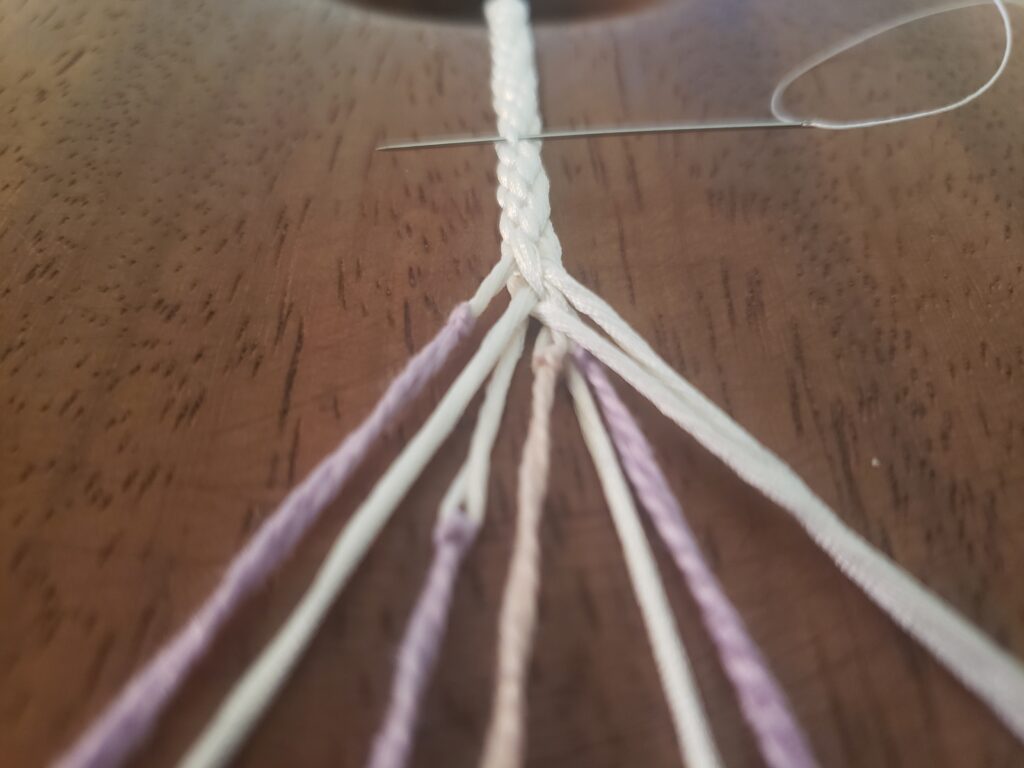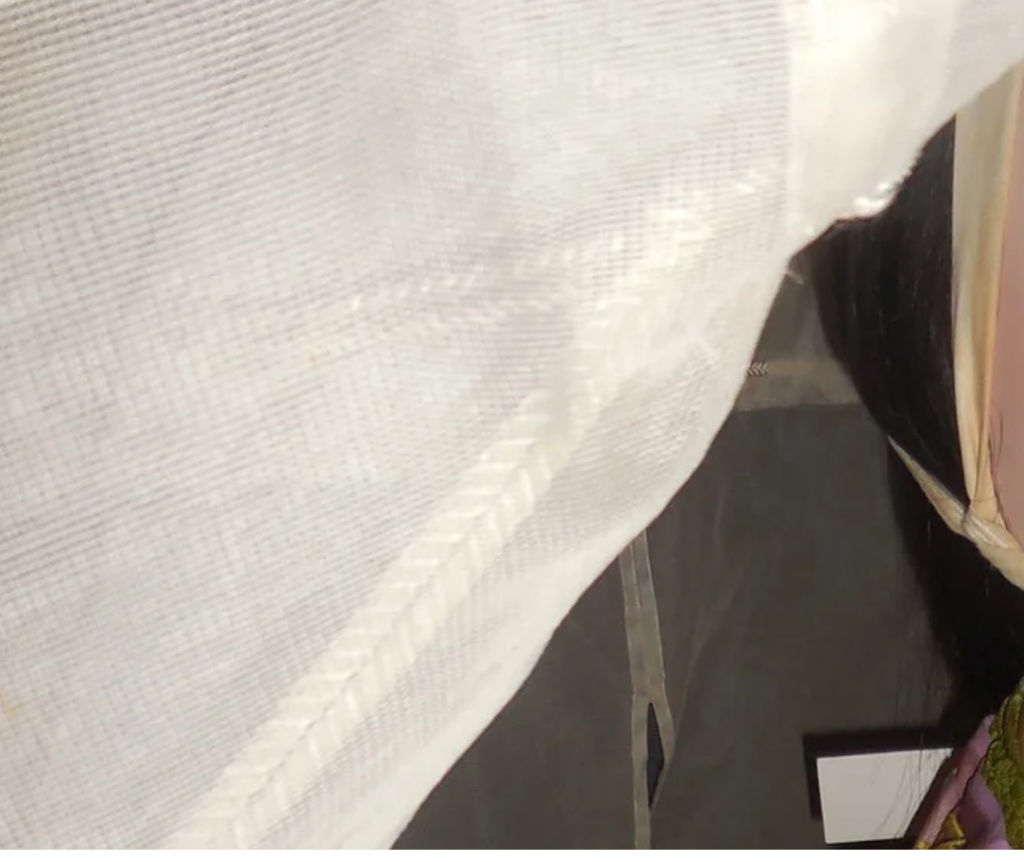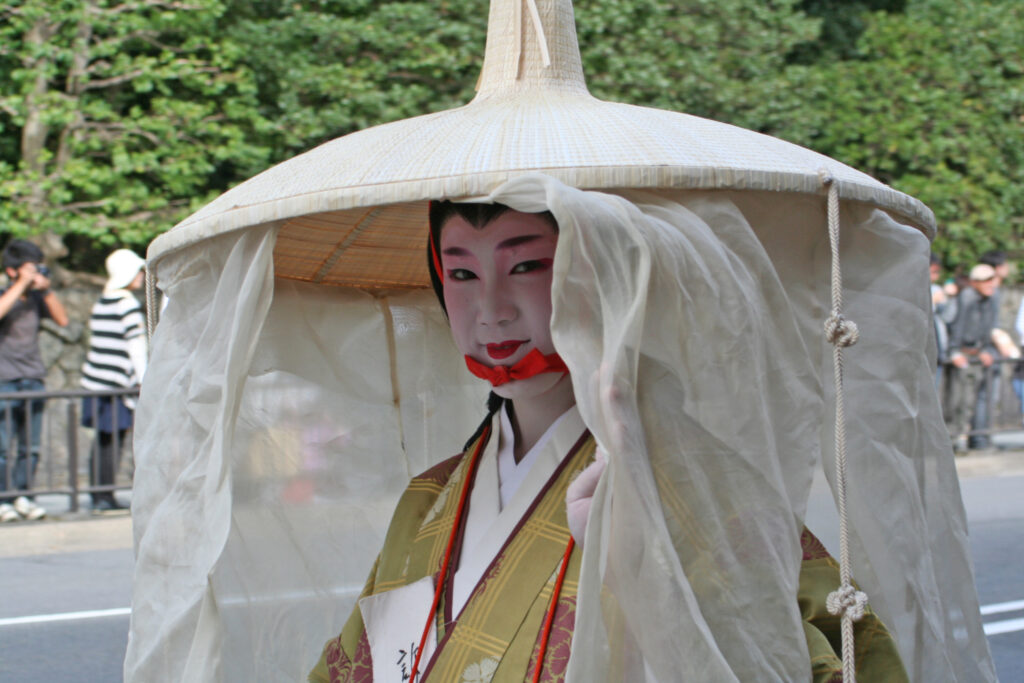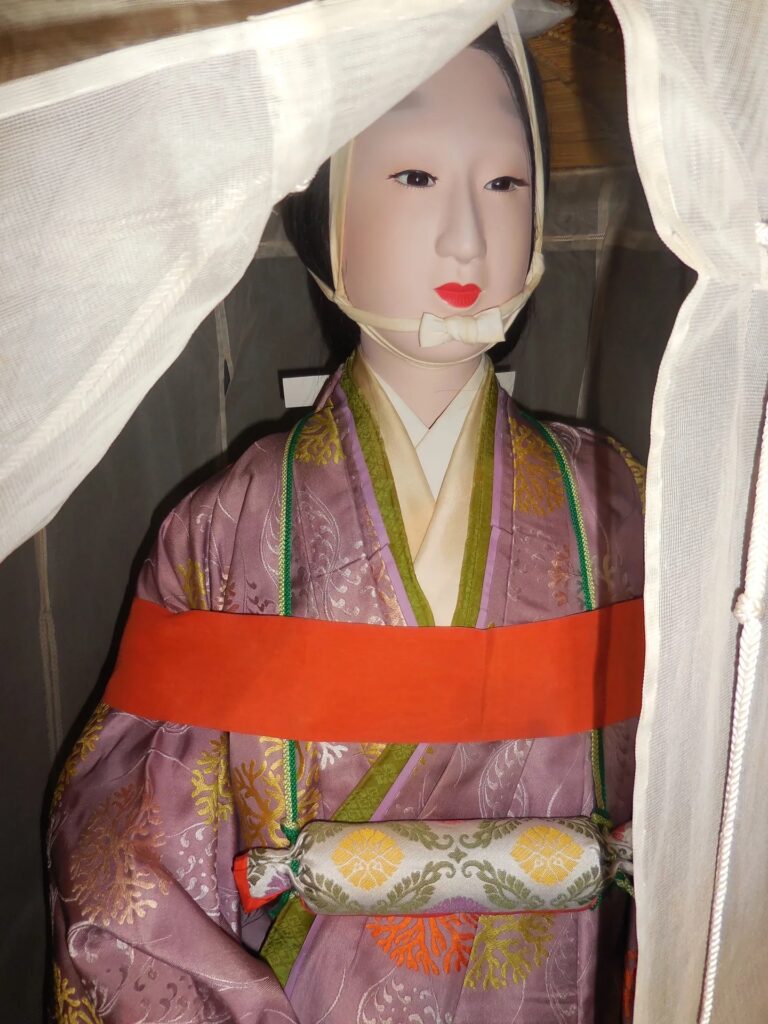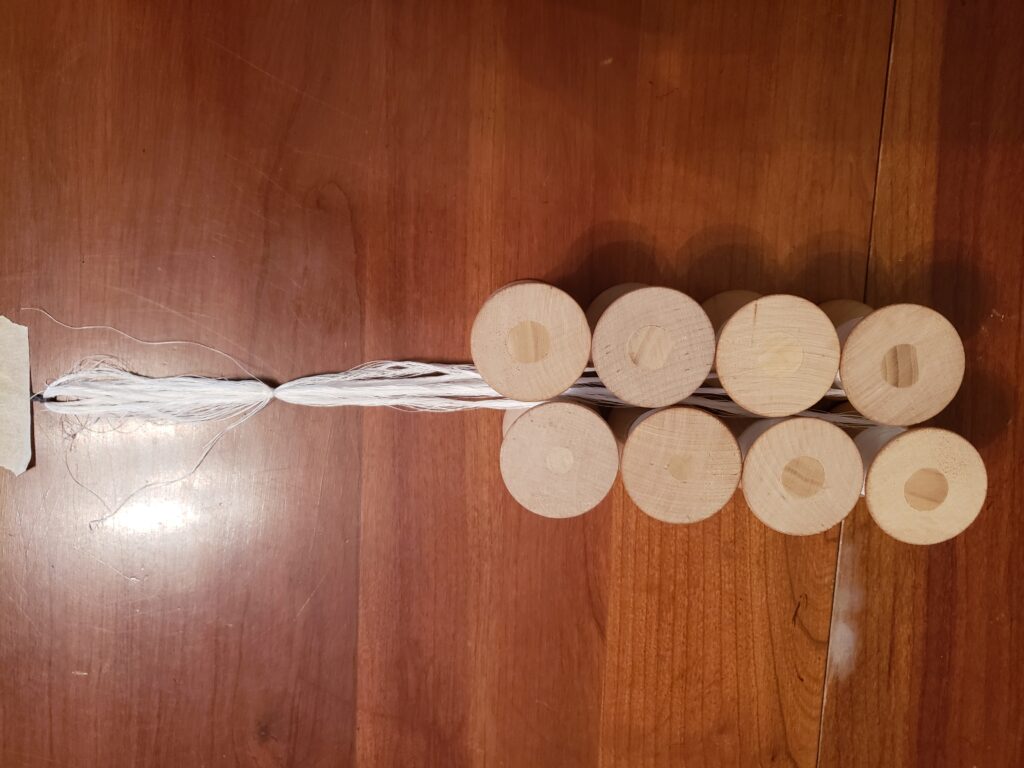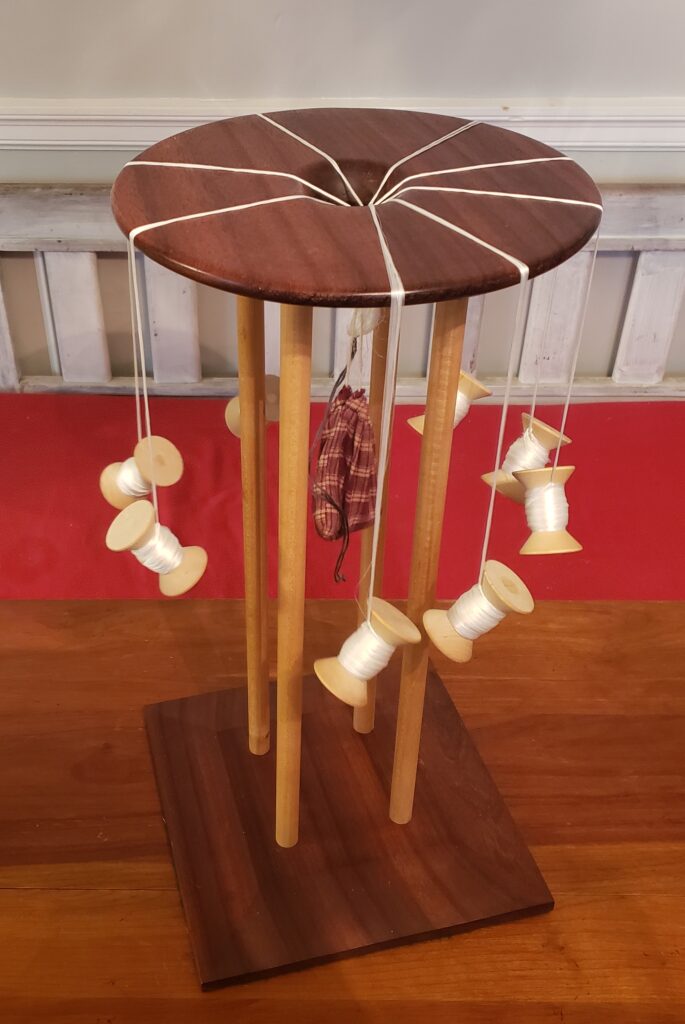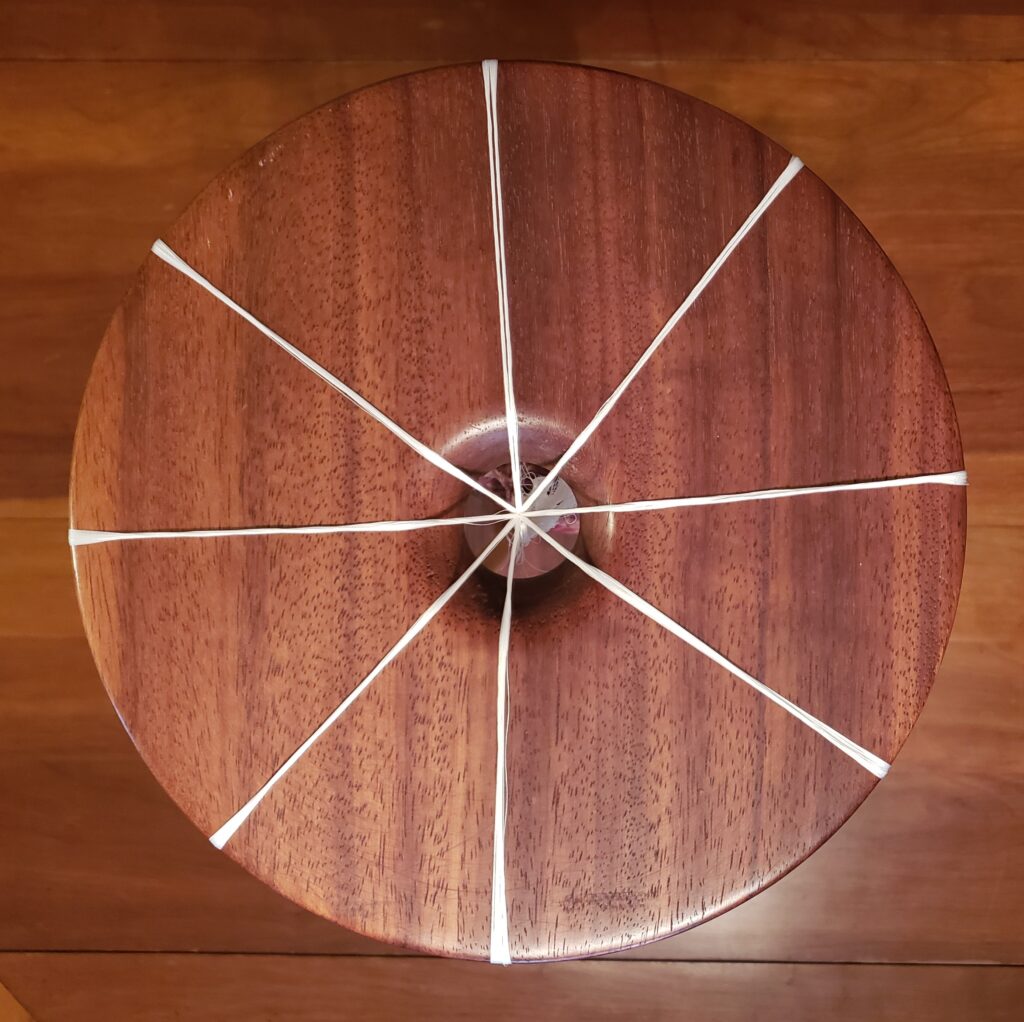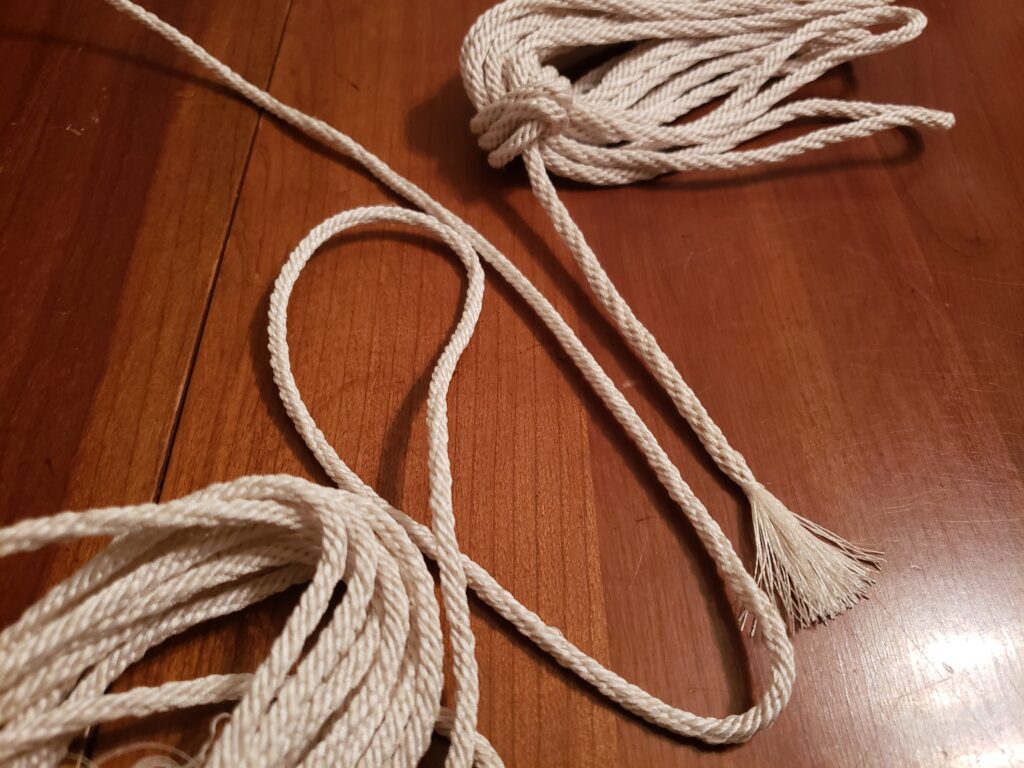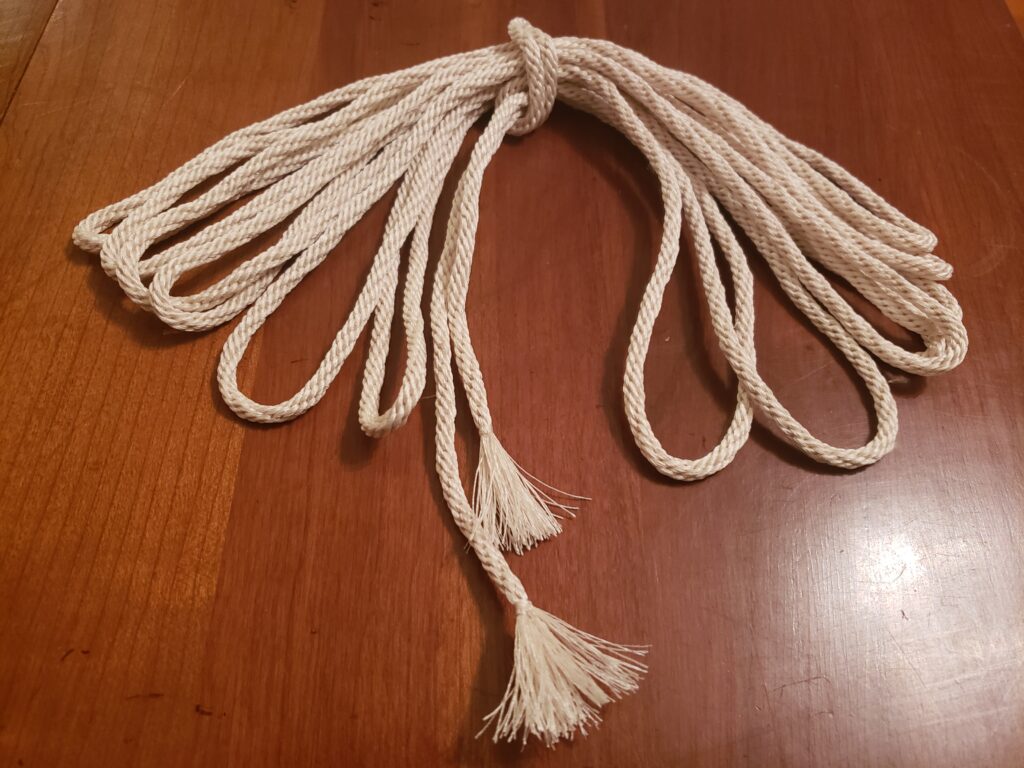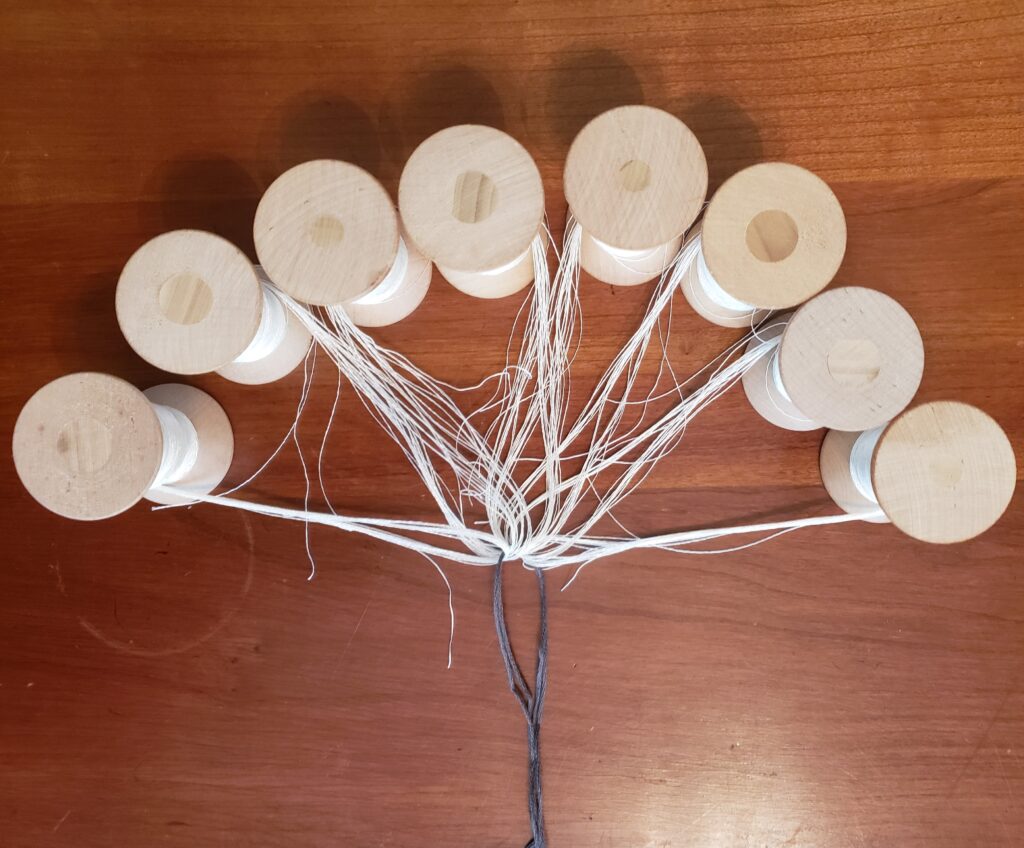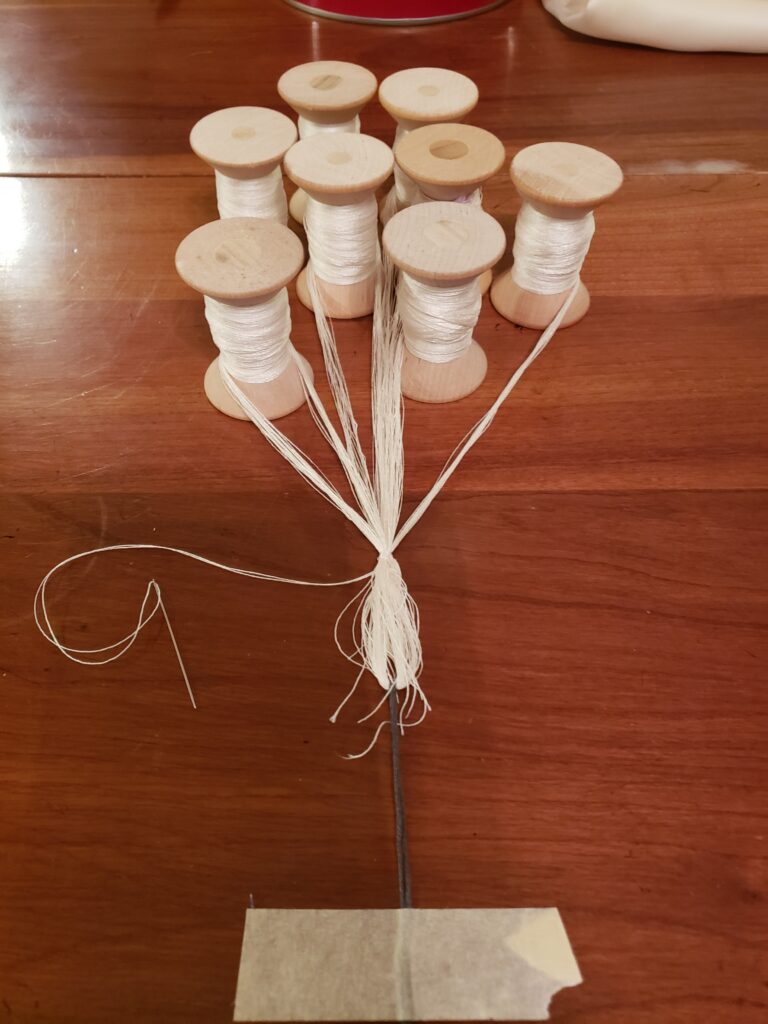One of the reasons I leapt into the Calontir Clothing Challenge was to give me something to focus on other than my grief. I had just lost my darling animal companion, a yellow fronted amazon parrot named Loretto. He was my world.
And now I find myself thrust into the position of shoving more grief onto this project. I’ve lost a job I love, the best I’ve ever had. My industry is dying. Theatre as we knew it is in a death scene. So I’m also mourning my career to some extent. Maybe things will be better after the pandemic. If theatre comes back, the job I love might be mine again. There is a tiny glimmer of hope.
And I’m going to cling to that and keep working on this project. I know it’s a lot to put on a project, but here we are.
I stayed up way too late last night weaving, so this morning I started at 83 inches. I’m not kidding around about throwing myself into this project.
I’ve been dealing with what seem to be more tension issues with individual threads within strands being off. The finished product doesn’t appear to have been affected. I did top out at a blazing 37 inches per hour. I certainly feel it in my shoulders.
I will need to trim up the kazari-himo, decorative cords. The first came in at 166 inches, second at 174, third at 172 and the fourth finished out at 181 inches. This last cord also finished a bit better than the rest. 4 of 8 strands terminated within an half inch of each other. My overall tension was better. How about that?
